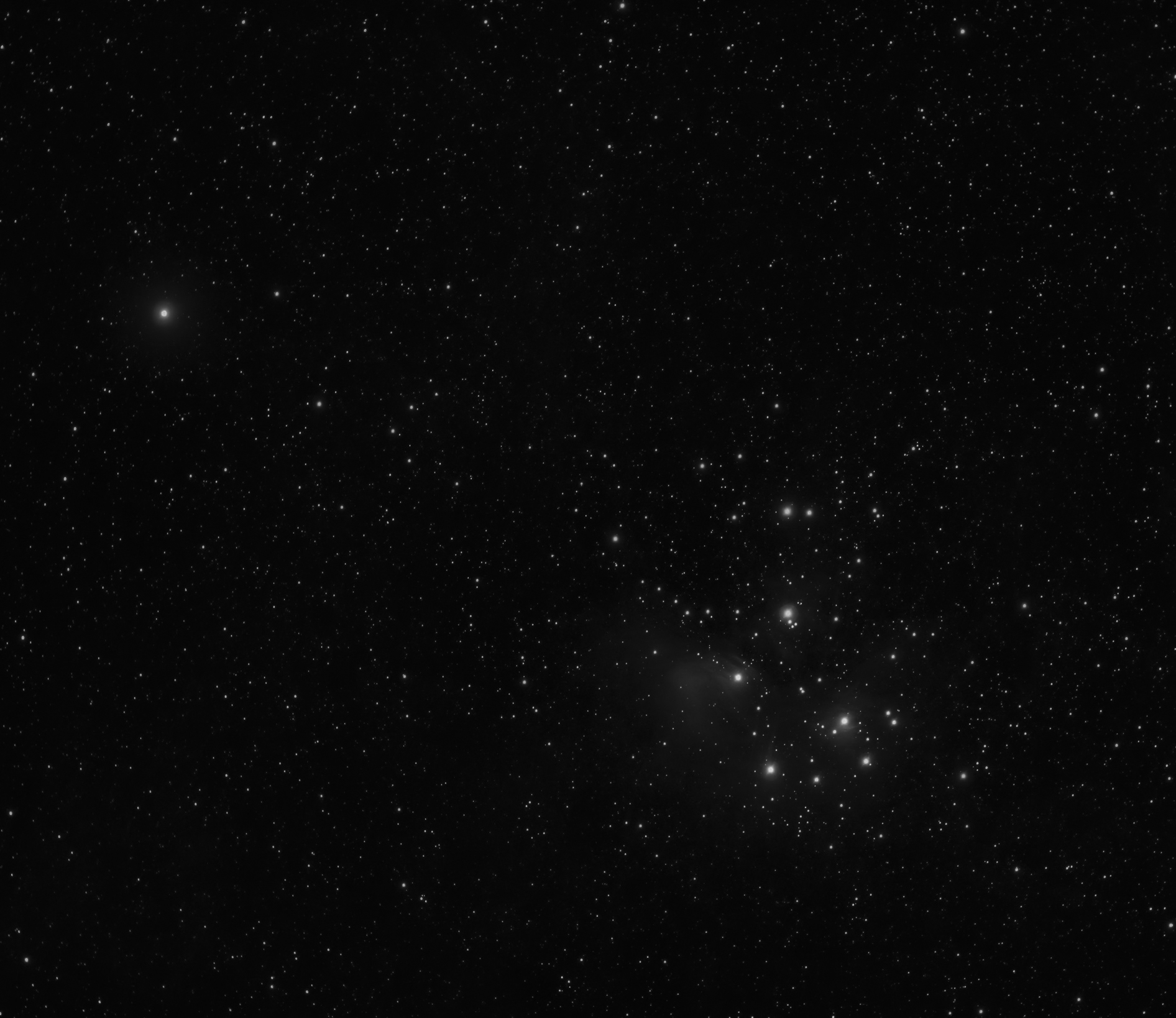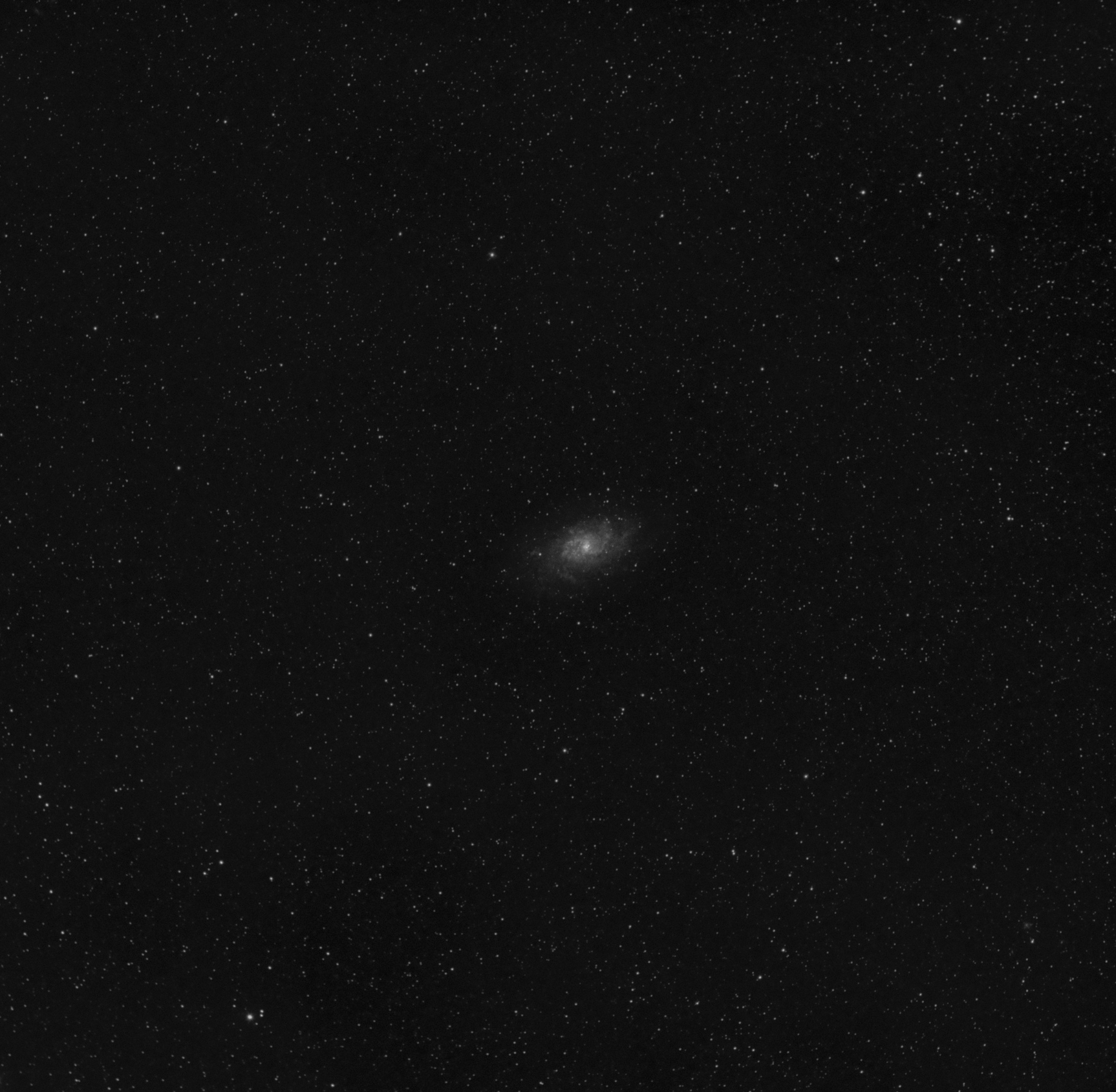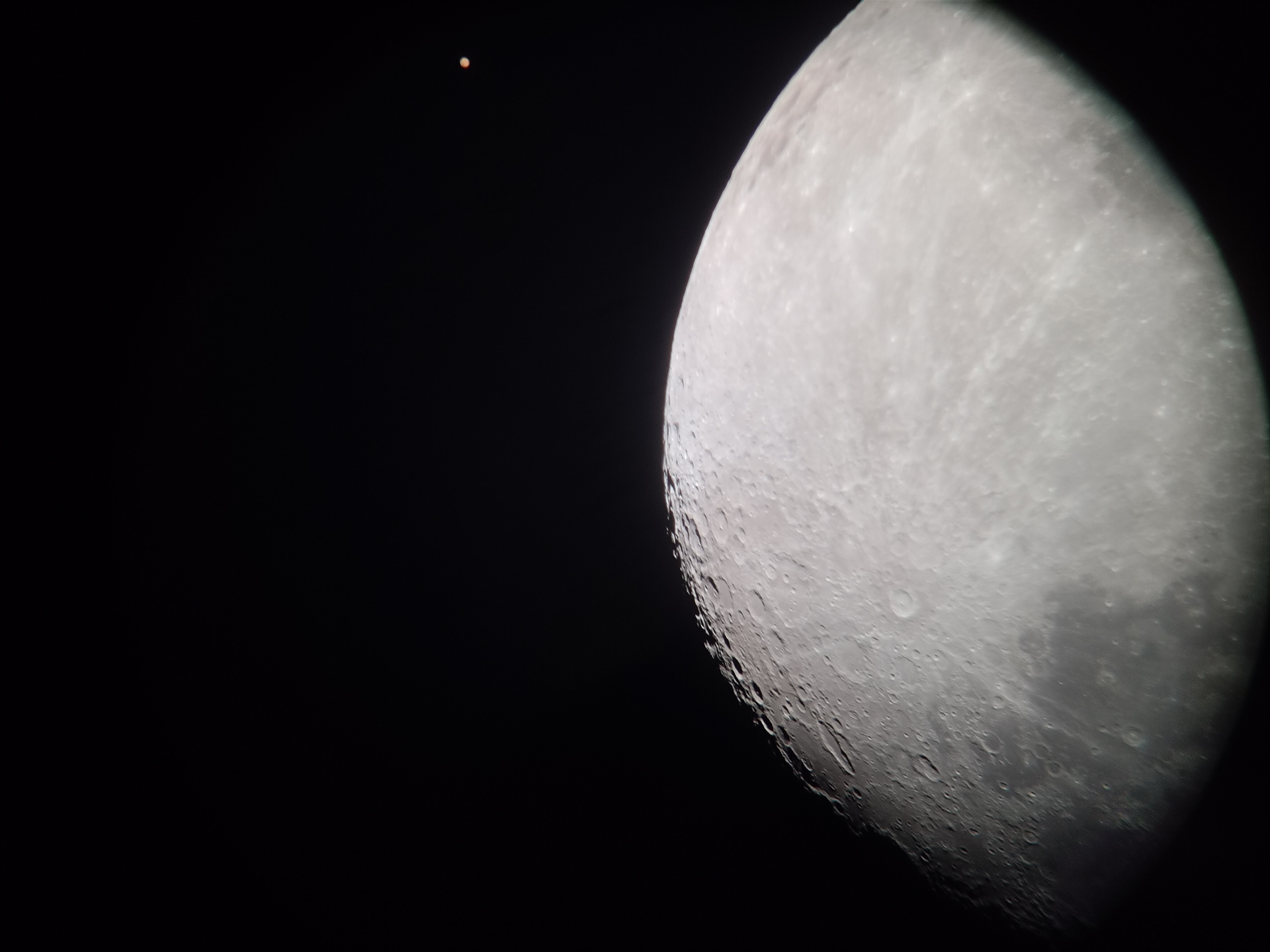On February 10, members of the IKBFU Astronomical Community photographed a number of celestial objects, overcoming the bright Moon’s glow, which made it difficult to image the fainter entities.
Image 1 shows the Pleiades (M45), an open star cluster. Viewed away from the city lights, they are visible even to the naked eye, moreso with the use of professional equipment. The star cluster is located at a distance of about 135 parsecs or 440 light years from Earth in the Orion Arm of the Milky Way Galaxy (as is the Solar System); it consists of several thousand stars.

|
| Pleiades Open Star Cluster (M45) |
| Alexey Baigashov, Head of the IKBFU Astronomical Society: |
| Most of the Pleiades stars are quite dim, with only seven of the brightest visible to the naked eye, which is why the ancient Greeks called this cluster the “Seven Sisters”. |
Image 2 shows the Triangulum Galaxy (M33), one of the closest to Earth galaxies in the Triangulum constellation. Although it is the third brightest galaxy in the night sky after the Milky Way and the Andromeda Galaxy, in ordinary conditions it resembles a faint star. The images taken by Kaliningrad astronomers show the inner structure of the galaxy — a spiral turned towards Earth at almost 90 degree angle.

|
| Triangulum Galaxy (M33) |
Image 3 shows Mars and the Moon at a close conjunction. The shape of the planet and its characteristic reddish colour are clearly visible through using a powerful 280-mm telescope.

|
| Moon-Mars Conjunction |
| Alexey Baigashov, Head of the IKBFU Astronomical Society: |
| This exciting phenomenon is on the rarer side — most planets fall into conjunction with the Moon two or three times a year. Among the most spectacular are conjunctions with bright, observable planets: Venus, Mars, Jupiter and Saturn. |
In addition, astrophotographers captured 135 Hertha — a fairly large asteroid with a diameter of about 80 kilometres belonging to the asteroid belt. Observations have shown that it has its own rotation and makes a complete revolution around its axis in eight and a half hours. 135 Hertha is travelling in a stable orbit and poses no threat to Earth.
Unfortunately, the bright light of the full Moon prevented Kaliningrad astronomers from filming the asteroid’s movement — in the animation, composed of several consecutive frames, only a faint dot is visible.
| 135 Hertha |
User profile for student
User profile for student
I give consent to the processing of the personal data provided, with Personal Data Processing Policy acquainted
Confirm consent